Find out why seed oils make sunburned skin more inflamed and how avoiding them protects your collagen and keeps you looking young
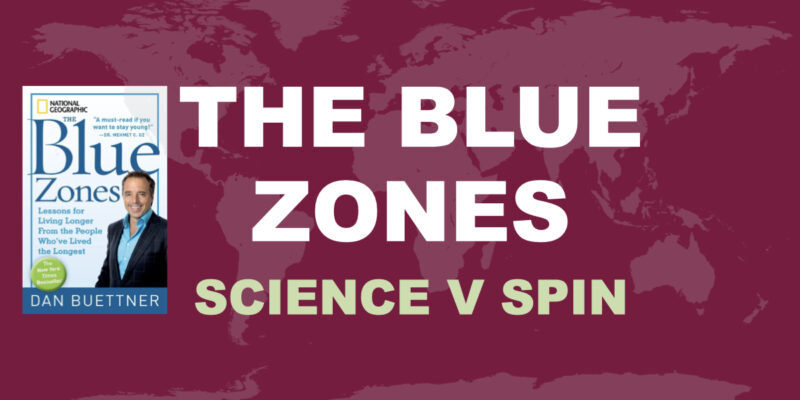
Blue Zones Website Misrepresents Diets
Table of Contents
- In the years since its publication, I haven’t seen anyone cover the Blue Zones contradictions.
- The Sardinian Blue Zone
- Sardinian Blue Zone Chapter Takeaway Lessons
- The Okinowan Blue Zone
- Two Okinawan Blue Zone “Lessons “
- The Adventist Blue Zone in Loma Linda California
- The Costa Rican Blue Zone
- My Own Approach to Longevity
- “We do need people to come to the hospital”
- The Most Important Longevity Lessons
Fact-Checking the Blue Zones Book—Against Itself!
The Blue Zones book was a huge phenomenon when it first came out, and its influence is still growing. Released in 2008, it describes the diets of four geographic regions with a disproportionately high percentage of people older than 100. But it wasn’t the scientific endeavor many believe it to be.
Dan Buettner, the author, is a journalist. He interviewed several scientists, but the book was not scientifically vetted in any way. The bigger issue is that the scientists who belong to the Seventh-Day Adventist church seem to have provided a great deal of editorial input, as we’ll see. Originally I thought they paid for his travels, but he doesn’t list the organizations that pay him, just private names. It’s not clear when the financial entanglements of these two enterprises started, but by 2020, the Adventist church acquired Blue Zones® outright.
If you don’t already know, the Adventist church advocates for a mostly vegetarian diet. As a result of this bias, the Blue Zones book is full of contradictory content of the kind you would expect when a journalist reports what he saw, and a biased editor tries to make those observations fit his or her worldview. The result of this square-peg-round-hole relationship is that the big, bold recommendations at the end of the chapters conflict with the content within the chapters.
This article is continued below...(scroll down)
In other words, the book misquotes itself. And so when members of the media (or anyone else) don’t read carefully, they’ll be misled by those big, bolded statements. This is a problem because the Blue Zones website and documentaries point to the Blue Zones book as evidence that you need to follow a mostly vegetarian diet if you want to live a long, healthy life. In reality, the book provides evidence for a very different kind of diet, as we will see.
In the years since its publication, I haven’t seen anyone cover the Blue Zones contradictions.
The inconsistencies in the Blue Zones book are more important than ever because the Blue Zones organization influences what an ever-increasing number of doctors believe about nutrition.
The Seventh Day Adventists organization (SDA) also runs the American College of Lifestyle Medicine, which promises doctors that it offers “evidence-based education.” The ACLM also certifies doctors who are interested in advancing their nutrition education. An ACLM certification can be a prerequisite for leadership positions within healthcare organizations such as Kaiser Permanente and of course the 200-plus Adventist hospitals and clinics. Through this powerful educational channel, the SDA now dictates a good part of medical thinking on diet and health.
If you believe what your doctor tells you about nutrition, there’s a good chance that the Seventh Day Adventist church is influencing what you think a healthy diet looks like. For better or for worse.
In this article, I want to show you that the truth Dan Buettner uncovered is far more beautiful and empowering than “eat mostly plants.”
Let’s take a look at how the Blue Zones turned evidence for a holistic approach to eating into propaganda that ultimately helps to sell processed food (especially protein powder and vegetable oil!)
The Sardinian Blue Zone
Giuseppe the Centenarian
Buettner spent one week in Sardinia where he met 17 centenarians. The only diet details he gives are from 102-year-old Giuseppe Mura. Arriving at his house, Buettner writes “Inside it was cool and pleasantly damp; it smelled vaguely of sausages and red wine. Ignoring the dangling sausages, we learn that “Giuseppe’s diet consisted largely of fava beans, pecorino cheese, bread, and meat as he could afford it, which was rarely in the early days.”
He doesn’t report on when those “early days” were. Still, sausages notwithstanding, the picture is clear enough. At some point, sheep-milk cheese was either the biggest or second biggest source of protein in Giuseppe’s diet. Meat was considered desirable and something to be had as often as you could afford.
After this interview, Buettner explains that many people were too infirm to have meaningful conversations about their past diets. So he has to seed out “someone younger who was still working and living traditionally.” That’s when we meet the next elderly Sardinian.
Tonino the Shepherd
75-year-old Tonino lives in a charming 3,000-year-old village. He still lived a very active life at the time of the interview, tending his sheep, and making wine. Here’s what Buettner says about his first meeting:
“When I caught up with Tonino…he was slaughtering a cow in the shed behind his house, his arms elbow-deep in the animal’s carcass. A strapping barrel-chested man, he withdrew his fist from the steaming mess and then strongly gripped my had, vise-like, with a moist, bloodied handshake.”
(As an interesting sidetone, weak grip strength is a powerful predictor of mortality.)
“‘Good morning,’ [Tonino] boomed, then plunged his hands in again, this time to reel out several yards of glistening intestines….The cow would provide meat for two families for the season, as well as for several friends who would receive gift packages of beef.”
How Much Meat on That Cow?
A 1,200-pound cow yields roughly 756 pounds of meat. Assuming they don’t give more than 50 pounds away, it’s safe to say that two Tonino families were looking forward to eating at least 700 pounds of beef in the next three or four months. We don’t learn how many people two families represent, but just for the sake of argument let’s say this 700 pounds is feeding 10 people for 100 days. That’s 0.7 pounds of beef per person per day. And this is just factoring in cows; they likely ate many more pounds of eggs, goat, sheep, pork, fish, and chicken.
Typically, traditional cuisines make use of every last part of the animal; nothing goes to waste. So chances are the family was also looking forward to at least fifty more pounds of offal, marrow, and trimmed fat from that one cow. Plus, they would likely boil the joint material (tendons and ligaments) into gelatinous broths.
This all adds up to quite a bit of meat consumption. How do they boil this down in the chapter takeaway? We’ll see in a minute.
In reviewing Tonino’s diet as a child, we learn, “When the family was young, they were very poor…They ate what they produced on their land…mostly bread, cheese, and vegetables…Meat was at best a weekly affair, boiled on Sunday with pasta and roasted during festivals…Sheep and goat milk products contributed most of the protein…”
Sardinian Blue Zone Chapter Takeaway Lessons
“Eat a lean, plant-based diet accented with meat.”
While it seems that during their poorest years, Sardinians didn’t eat much meat. But you can’t just report on what people ate during their poorest years and ignore the rest of their lives. Especially not when you hear again and again that meat is highly valued and you’ve just described families surrounded by an abundance of meat.
Secondly, to say Sardinians ate a plant-based diet completely contradicts the quote from the chapter itself (see above), that “Sheep and goat milk products contributed most [underscore most] of the protein”
Last, the suggestion that people in Sardinia ate “lean.” Nowhere in the chapter does he ask anyone about their fat intake. Indeed, he specifically explains he does not ask direct dietary questions! There is no evidence that anyone volunteered this sort of information. It looks totally made up.
Let’s look at the chapter’s final dietary lesson:
“Drink goat milk”
If anything, this should be about sheep’s cheese, which was mentioned more often than goat’s milk. You can buy sheep’s milk cheese in many grocery stores in the US. But goat’s milk is much harder to come by. When you want to discourage people from eating dairy, one way to do it is to highlight the very specific benefits of a very hard-to-get dairy product. And that’s exactly what they did, claiming that goat’s milk was healthy because the goats in Sardinia ate a very specific sort of weed.
I point this out because if you pick recommendations that are impossible to follow you’re deterring them from making positive change. And that means you are not helping people as much as you could.
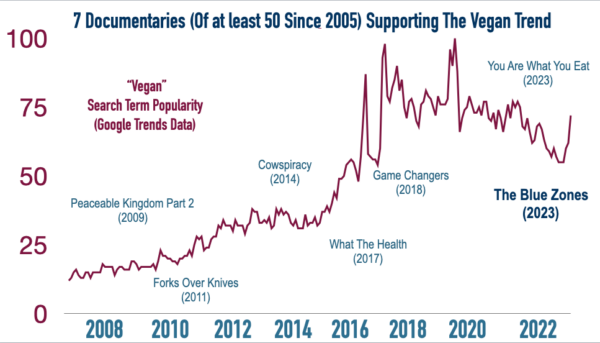
The Okinowan Blue Zone
The first expert to give us diet advice in Japan offers a rather surprising opinion.
Pork As a Stroke-Prevention Food
According to one Japanese longevity expert, Dr. Kazuhiko Taira, Okinawans suffer fewer strokes than people elsewhere in Japan. Why? Well, this doctor had two ideas. “He believed it is related to diet, specifically the eating of less salt and more pork.”
I’m not sure he is right about Okinawans eating less salt, given that doctors are generally biased against it. Besides, fermented soybeans, and soy sauce, are quite high in salt, and bacon and ham are cured in salt. But we’ll leave that for a minute and discuss how he saw pork as a stroke-prevention agent. He explained that pork has protein and collagen, and both of these support the structural integrity of our blood vessels. “Okinawa people eat most every part of the pig. There is a lot of vitamin B1 and B2 in it, and collagen, which is good for you.” Losing that structural integrity may contribute to blood vessel damage, arterial plaque formation, and strokes.
How much pork do they eat? We don’t get a clue! We do get a precise measurement of soy down to the ounce. “Okinawans eat an average of three ounces of soy products per day.”
So an Okinawan doctor tells us they eat a lot of pork in Okinawa, more than anywhere else in Japan, and that he thinks its healthful properties help people live a long, healthy life. What does the chapter summary say about this? We’ll see in a moment.
Before You Wonder if Pork Might Be Healthy…
The very next sentence after Dr. Tairia’s praise of pork’s virtues is an admonishment not to eat too much. “Too much animal protein can increase your chances of obesity.”
This nutrition-related statement is not cited. Probably because it’s not possible to cite such a silly statement; too much of anything can increase your chances of obesity. I point this out because I think the purpose of this unsupported claim is to make us worry about pork negatively impacting our waistlines and forget about the doctor we just met who suggests pork is healthy.
Sweet Potatoes in Okinawa: “No One Really Eats it Anymore”
In the early 1900s century, Okinawan farms were failing. Crops like Barley and other staples were not growing well in the depleted soil. Only sweet potato thrived. So at one point “Okinawans got 80 percent of their calories from sweet potatoes alone. But this was not true for very long. The quote above comes from an elderly woman Buettner interviews who tells us that most of the people who’d had to live on sweet potatoes felt they’d had enough to last a lifetime. As soon as the food supply improved, they didn’t eat it anymore. But the good times didn’t last long in the early part of the 1900s.
“Mostly We Were Hungry”
During the worldwide depression of the 1930s, Okinawans again relied heavily on sweet potatoes and only ate pork “once a year.” During World War II, there was widespread famine. According to one interviewee, “There was no food. We ate miso and drank rainwater.” This is interesting information that speaks to our human adaptability, but that’s not all there is to this story.
Many people died of famine during these difficult years—something we don’t see a word about in the book. Instead, the implication is that borderline starvation is part of the secret to longevity. While overeating certainly is not healthy, prolonged calorie deprivation invites infections that, without antibiotics, are often fatal. In childhood, prolonged malnutrition profoundly stunts our growth, including the growth of brain tissue. It can also give us weak, osteoporotic bones later in life.
What About Sushi?
Everyone knows Japanese people love their sushi and fish. But the only attempt to quantify how much fish people in Okinawa eat is a suggestion that people elsewhere in Japan eat relatively more.
Two Okinawan Blue Zone “Lessons “
Stir-Fried-Baloney
The first diet-related longevity lesson from Okinawa Blue Zone is “Rely on a plant-based diet.” The lesson continues: “Older Okinawans have eaten a plant-based diet most of their lives. Their meals of stir-fried vegetables, sweet potatoes, and tofu are high in nutrients and low in calories.”
Sweet potatoes? We just learned these healthy elderly people had their fill of sweet potatoes and don’t eat them anymore.
When Pigs Fly
The final Okinawan lesson is a real distortion of reality. “Okinawans do eat some pork, it is traditionally reserved only for infrequent ceremonial occasions and taken only in small amounts.” That directly contradicts what we learn from the doctor practicing in Okinawa.
The author, or his editors, repeatedly ignore what the Okinawans themselves say about their diets. This is not only misleading, its also very disrespectful to the people who took their time to speak with him. And this lack of due respect follows him everywhere he goes with one exception, as we’re about to see.
The Adventist Blue Zone in Loma Linda California
This is the only chapter in the book where I don’t see any inconsistencies or misleading statements about the diets of the healthy people he interviews. After all, they’re all strictly adherent Adventists. They are the ones who came up with the idea that eating meat is unhealthy. So unlike the other Blue Zones, their lives don’t need to be edited to create a tidy set of Adventist-compliant lessons.
The real value of the chapter is an insight into the foundational studies investigating the health effects of meat.
Did Statisticians Manipulate Study Results?
We don’t get any great insights nutritionally here, but we do get an important lesson on the history of a very influential body of research.
We learn that Adventists themselves were in a position to create the “evidence” that meat causes heart attacks. In other words, people with a vested interest in making meat look less healthy were in charge of one of the largest studies investigating the health effects of meat. (You can hear the Adventist perspective on this here.)
An Adventist pastor who was also an epidemiologist named Dr. Terry Butler helped to “stimulate high levels of Adventist participation in the AHS studies.” (AHS stands for Adventist Health Study.) Epidemiologists are statisticians who investigate the causes of illnesses using numerical tools.
The first Adventist Health Study began in 1958 and additional similar studies are still ongoing today. Together, they represent a huge database and have hugely influenced research on diet and health. The World Health Organization report that declared red meat potentially carcinogenic relied in part on this database.
If you’ve heard that meat causes cancer or heart attacks, it’s thanks in part to that huge, Adventist-generated database. Few people know that the database was created and interpreted by expert number crunchers with a strong bias against meat eating. I certainly had no idea. This is problematic because it’s very easy for epidemiologists to statistically manipulate data to get the results they want. (After all, there are clichés about lies and statistics.) According to an insider who worked on a very large national health study for many years, this happens a lot. This insider told me “I basically watched one investigator do everything he could except fabricate data to get the result he expected.”
Avoid Processed Foods…Unless You’re Buying From Us
We also learn a lesson about compromising your values for profit.
One of the Adventists’ central nutritional tenets is eating whole, unprocessed foods. But when an Adventist physician named John Harvey Kellogg started touting the virtues of his (highly processed) cereal flakes, the local church members in Battle Creek, MI, were happy to bend the rules. The Kellogg company is still one of the largest employers in Battle Creek.
The Costa Rican Blue Zone
The reporting on this Central American blue zone is possibly the most distorted of all.
Eggs, pork, livestock, and lard, oh my.
The first meal we learn about in this blue zone is a breakfast of pico de gallo (a kind of salsa) and eggs, served at Cafe Central. Here a group of men sit together outdoors enjoying this very low-carb dish.
Next, we meet a woman who lives deep in the forest of Nicoya, in a small house fronted by a chicken coop. The 100-year-old owner of the house welcomes Buettner and his companion with a breakfast of “beans, eggs, and tortillas.”
Notwithstanding the poultry and eggs, a few pages later in the chapter Buettner summarizes the diets of the “up to 20” people over the age of 90 whom he interviewed: “Their diet consisted largely of corn, beans, pork, garden vegetable, and an abundance of fruit…much of it grown in and around their yards.” The amount of pork would be good information to share, but we don’t get any sense of it. One of the centenarians he met “still grew a garden, harvested his own corn and beans, and kept some livestock.” Again, we’re short on very important details of meat consumption, creating an impression that people weren’t eating enough to mention. But if you want to be scientific, you need to at least attempt to quantify everything.
While lean on the meaty details, the chapter does quantify how much lard Faustino’s family eats.
Two Litres of Lard Every Week
Later, we meet Don Faustino, a retired cowboy who takes a bus into the nearest town every Sunday to buy the week’s groceries. Their first stop together is the butcher’s shop. Here, Faustino handed “two-liter plastic bottles to the butcher to fill with liquefied lard. [Lard is rendered pork fat.] Then the butcher sliced off two slabs of pork from a dangling pig carcass and wrapped them in newspapers.” The rest of the week’s food he grows, including “corn, beans, and vegetables to feed his wife and six children.”
Two-liter bottles full of lard represent nearly five pounds of animal fat that he’s using weekly. That’s 20,000 calories. Divided among 8 people over a period of 7 days, amounts to more than 350 calories of lard every single day, or 17 percent of their daily calorie intake from this one type of added fat. That’s assuming 2000 calories per person per day, which, is likely too high, and that would mean added fats are greater than 17 percent. (I’m bringing this up for a reason, as you’ll see, next.) Where might all that lard get eaten? The chapter does tell us its used to fry eggs. It fails to reveal that lard is also used to fry just about everything throughout much of rural Central America. Lard is traditionally added to black beans, which accompany almost every meal.
The Adventist Spin on Costa Rican Blue Zone Diets
Further along in the chapter on Costa Rica, we read an excerpt from a document summarizing the daily diet of an “average Nicoyan 50 years prior.” It describes a complete breakfast as one with rice, beans (made with lard), eggs (cooked in lard) and milk. We learn the midday meal “often begins with a pot of soup” made with meat, fat, boiled plantains, tisquisque or yuca, and perhaps a few greens. “After the soup come rice and beans [made with lard], usually accompanied by fried [in lard] eggs.” We also learn that meat “sometimes appears on even the poorest table, and there is usually cuajada, a milk curd.”
Despite all this, and in keeping with the other blue zone chapter summaries, the meat, dairy, and animal fats don’t make it into the takeaway lessons. Even though Buettner writes that the people he met here were probably the healthiest of all, this chapter summary offers no specific insights into their diets whatsoever. The only food-related lessons we get are “drink water” and “eat a light dinner.”
The bluzones.com website gives quite a bit more detail. It claims that the typical Nicoyan’s calorie breakdown includes just 5 percent added fats, and a very spare 5 percent of calories from meat, fish, and poultry combined. This hardly seems possible given what we read throughout the chapter. And the website fails to mention the ubiquitous eggs at all.
My Own Approach to Longevity
I believe that nature makes it simple for us to eat healthily. What’s good for longevity, is also good for fertility, weight loss, cancer prevention, and so on.
The whole concept of the Blue Zones is that we can learn about what to eat from people who follow a traditional diet. I agree with that philosophy entirely, and it has a name. It’s called ancestral health. The idea is traditional diets encapsulate a lot of important dietary information. After all, it’s just basic common sense; we owe our existence to people who ate traditional foods (not processed foods). And the science of epigenetics confirms that we are what our collective ancestors ate.
The book does provide some valuable dietary lessons that I think many people in the Adventist church could agree with.
1. Geographic isolation. This means people need to be more self-sufficient and produce their own food. Not only does this give them fresher food, it means they’re going to do extra work to make it taste good.
2. More nutritious food. Like I always say, when it comes to real food (as opposed to processed food) more flavor equals more nutrition.
3. A whole food, omnivorous diet.
4. No vegetable oils or processed foods! This may be the most important common element of all. Not only is there no vegetable oil, there are also no processed foods of any kind. Specifically no refined flour or sugar, and no protein powders. It’s a glaring omission to leave this out of the book.
Why would a healthcare organization fail to point out that avoiding processed foods is one of the keys to a long healthy life? I already touched on the cereal conflict. But there is another.
“We do need people to come to the hospital”
The Adventist organization doesn’t want you to die, but let’s not forget they own a lot of hospitals. So they’re conflicted. When I lived in California as we discussed the upper-level thinking on helping people stay well with diet, he let the contradiction slip. His exact words are burned into my memory: “We don’t want people to get sick, but we do want them to come to the hospital once in a while.”
The Most Important Longevity Lessons
The single most important longevity lesson of all time might be this: take joy in making your own food, and good health will follow.
And here’s one more lesson from my book: Eat food that provides your DNA with the nutrients our human genes have come to expect.
For a simple set of principles that help you do exactly that, read 10 Steps to Deep Nutrition.
Further Reading
For another perspective on Costa Rican diets, read this article.
For an example of how Dan Buettner’s work gets distorted, check out the fat used in a “traditional” recipe on the page associated with this article.
For the history of the American College of Lifestyle Medicine, click here.
To visit the ACLM website click here.
This Post Has 7 Comments
Note: Please do not share personal information with a medical question in our comment section. Comments containing this content will be deleted due to HIPAA regulations.


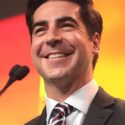
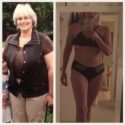

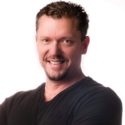
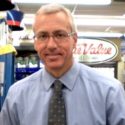
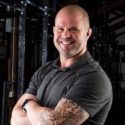
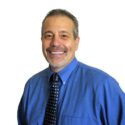

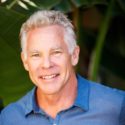
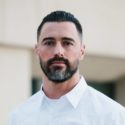

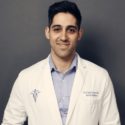
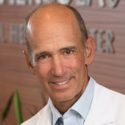




Nice article. You might like to add the data in the following paper. Newman, SJ 2024 Supercentenarian and remarkable age records exhibit patterns indicative of clerical errors and pension fraud. doi: https://doi.org/10.1101/704080. His conclusion is: . As such, relative poverty and short lifespan constitute unexpected predictors of centenarian and supercentenarian status and support a primary role of fraud and error in generating remarkable human age records.
I completely agree with Dr. Cate’s assessment of the Blue Zones website. As someone who has studied dietary patterns in different cultures, I find it striking how the Blue Zones website oversimplifies and misrepresents the complexities of these diets. It’s important to acknowledge the diversity and nuances of traditional diets, rather than reducing them to a set of simplistic recommendations. Thank you for bringing this to light!
I can confirm the same view from my vacation in Crete.
What people think a blue zone diet is, and what it really is, are two different things.
A lot of natural food, lamb, yogurt, feta, olives, fish, and vegetables.
No avoidance of specific scientifically analyzed nutrient components or food groups. Just healthy natural food – often containing saturated fat.
Great article, thanks for untangeling the convoluted misinformation.
I strongly recommend the Plant Free MD podcast episode 155, where a Dr. Bill Schindler thoroughly describes the meat-based dietary traditions and active, social people he experienced in Sardinia.
I have read Dan Buettner’s first book on the Blue Zones. While he does say that people in the Blue Zones have a largely vegetarian diet he also points out that they typically are Not exclusively vegetarian nor vegan. He states that many of the people eat meat about once per week or so.
He also states that there are 9 traits that Blue Zone people share. Diet is just one of the nine.
I appreciate this article. I happened to have just recently watched The Blue Zones on Netflix, and was taking notes! When I saw the Loma Linda part what I took from it was the importance of community, exercise, and drive in life- I’ll skip the soy nugget section thanks. I’m surprised they have that much lard in a CostaRican diet! I agree completely that traditional diet is the fundamental lesson, as well as the roles and relationships we have, our drive in life. It is disrespectful to distort traditional diets, and I appreciate the work you do for the well being of humankind and and our planet.
Makes a lot of sense. Great article. Got to give the journalist some credit for including some of the inconvenient facts in the book. The sweet potato thing is funny. It’s like saying that, since Irish folks used to live on eating so many potatoes, that potatoes are the secret to perfect health.
The four dietary commonalities of the Blue Zones makes sense.